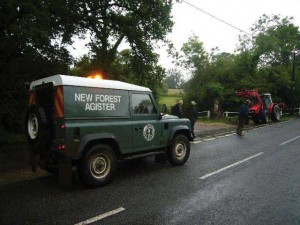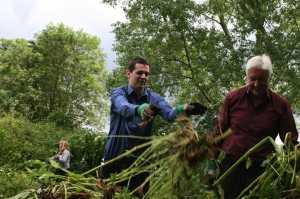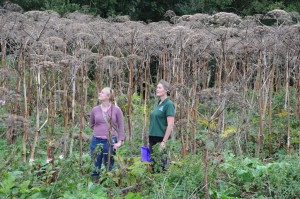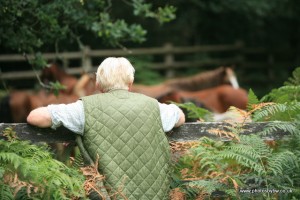Blog Archives
A-Z of Commoning and the New Forest
 We produce and distribute thousands of copies of our A-Z guide of to help people learn more about the commoning animals, New Forest way of life and the rules of the area to help keep everybody safe.
We produce and distribute thousands of copies of our A-Z guide of to help people learn more about the commoning animals, New Forest way of life and the rules of the area to help keep everybody safe.
If you would like a paper copy of our A-Z or think you can help stock or distribute it then please contact us
Click the letters below to learn more about the New Forest.
| A | B | C | D | E | F | G | H | I | J | K | L | M | N | O | P | Q | R | S | T | U | V | W | X | Y | Z |
Eradicating Himalayan Balsam
 Working with the New Forest Land Advice Service, our funding helped direct conservation action to eradicate Himalayan Balsam from the River Blackwater which runs for approximately 25km in the north of the New Forest.
Working with the New Forest Land Advice Service, our funding helped direct conservation action to eradicate Himalayan Balsam from the River Blackwater which runs for approximately 25km in the north of the New Forest.
Himalayan Balsam is a non-native plant which easily dominates river banks, leading to a loss of native species which are unable to compete.
Its shallow roots also result in localised erosion of the river banks leading to sedimentation of gravels which affect fish spawning, decreasing the number of freshwater invertebrates.
Removing Giant Hogweed
 Funding was given to the Hampshire and Isle of Wight Wildlife Trust to provide herbicide treatment to remove Giant Hogweed along the Avon Water downstream of Sway.
Funding was given to the Hampshire and Isle of Wight Wildlife Trust to provide herbicide treatment to remove Giant Hogweed along the Avon Water downstream of Sway.
Giant Hogweed, an introduced species from Southern Russia threatens our native wildlife, reduces access and presents a serious risk to human health.
Growing to a height of five metres, it contains a toxic sap which reacts with skin, causing ‘burning’ blisters and purple blotches. The burns can last for several months and even once they have died down skin can remain sensitive to light for many years afterwards.
Providing Land and Smallholdings for Commoning
 Our aim is to build up a stock of small holdings around the New Forest which will be made available, initially to young commoners, on a sustainable rent giving them a secure base from which to develop their commoning activities.
Our aim is to build up a stock of small holdings around the New Forest which will be made available, initially to young commoners, on a sustainable rent giving them a secure base from which to develop their commoning activities.
It is widely acknowledged that the commoners stock, mainly cattle and ponies that graze the open areas of the New Forest are vital in creating its conservation and ecological value. Without the animals the nature of the open areas of the New Forest would change dramatically, leading to the loss of much of its beauty, rich species diversity and wilderness quality.
Given that maintaining animals on the open forest is crucial it is obvious that it is also crucial that we maintain the community of people who own and look after the animals. In other words, the commoners who, through ownership or use of land with common rights attaching to it, have rights of pasture over the open areas of the New Forest and its adjacent commons.
Although efforts have been made over the last few years to increase the financial viability of commoning, the dramatic increases in property and land prices have accelerated well beyond the means of the average person to buy and/or rent within the area. Property with land suitable for commoning now costs a minimum of around £750,000.
At present this is a problem on an individual and personal level, which is not yet affecting the fabric of the New Forest, but it will, as the vast majority of small holdings coming on to the market are being sold as amenity land and lost to the long-term commoning community.
It is this threat to commoning that the Trust is keen to help with through the provision of land and commoners holdings. These will be rented out at an affordable and sustainable cost on the understanding that they are used for commoning, thereby helping maintain the open areas of the New Forest which are so special both in their conservation value and beauty.
We have signed a long term lease with Hampshire County Council for approximately 15 acres of land at Rockford Farm, near Ringwood. The council bought this land with the long-term intention that it be used for the benefit of the New Forest and in particular to support the practice of commoning. Subsequently it was agreed that the Trust was the most suitable organisation to take it on and develop it for this purpose.
New Forest Woodcock
A grant was given to the New Forest Woodcock group to purchase four radio tags to follow the birds undetected.
Woodcock are highly secretive, seldom seen in the woodland, and little is known about their daily behaviour and breeding habitats in the New Forest.
The New Forest has always been a UK stronghold for Woodcock and the project was set up to study this enigmatic species in a wild and unique landscape.




